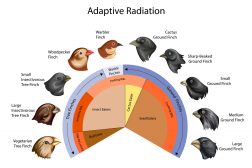Definition
noun
A composite bundle of fibers in the ventral half of the lateral funiculus of the spinal cord, and comprised of spinothalamic, spinohypothalamic, spinoreticular and spinomesencephalic fibers
Supplement
The anterolateral tract, also referred to as lemniscus spinalis, spinal lemniscus, tractus anterolaterales, or anterolateral tract, is a composite bundle of fibers found in the ventral half of the lateral funiculus of the spinal cord. It is comprised of spinothalamic, spinohypothalamic, spinoreticular and spinomesencephalic fibers. It also occupies the areas of the spinal white matter, and is historically divided into anterior and lateral spinothalamic tracts.1 The lateral spinothalamic tract is involved in the transmission of pain and temperature whereas the anterior spinothalamic tract is involved in the transmission of crude touch and firm pressure.
The anterolateral tract is found in white matter ventral to the denticulate ligament. Its function is mainly the transmission of nociceptive and thermal information and with crude or nondiscriminative touch.1 It is the ascending pathway in the nervous system from the periphery to the brain. Its three main pathways include the spinothalamic tract, the spinoreticular tract, and the spinotectal tract.
Abbreviation / Acronym: ALS
Synonym(s):
- lemniscus spinalis
- spinal lemniscus
- tractus anterolaterales
- anterolateral tract
See also:
Reference(s):
1 anterolateral system. (n.d.) Farlex Partner Medical Dictionary. (2012). Retrieved from http://medical-dictionary.thefreedictionary.com/anterolateral+system







